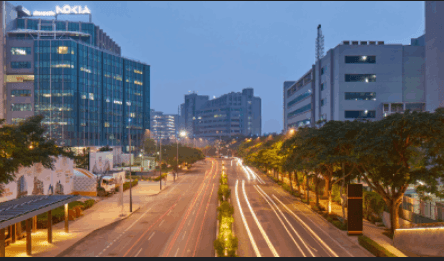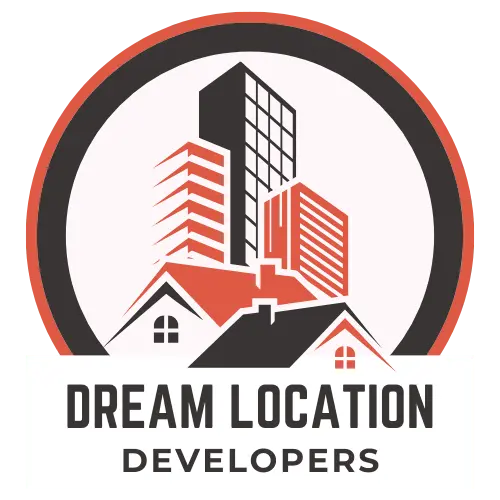
The Concept of Sustainable Community Structure
Given that 60% of the world’s population is likely to be residing in cities by 2030, and having around 50% of the Indian population projected to be in urban areas by 2031, there is an increasing pressure towards the development of sustainable community structures such as Housing, Employment, and Social. Sociologist Ray Oldenburg, argues that for one to live a healthy life, it is imperative that there exists an equilibrium of three important locations in one’s life; that is, the domicile, the office and an all-embracive third place. Unfortunately, with the increasing urbanisation, several important ‘all-embracive’ places such as: parks, community halls, multipurpose centres, child and youth facilities, libraries, and performing arts centres are under stress.
A Solution to Design and Create Infrastructure for the Community
Sustainable community infrastructure is essential in more ways than one, for it ensures strong communities are built and nurtured. They also act as enablers for social and economic activities thereby improving living standards of the people. It gives the people a place where they feel they belong and a chance to engage in group activities as well as the opportunity to create social relations. With such infrastructure children, the elderly and the disabled are able to especially locate themselves. Furthermore, they contribute towards building an environmentally friendly society by providing the context in which these societies are able to unify and change behavior.
Building a Sustainable Environment together for Future Generations
For inclusive social places to exist and thrive in a community, the right infrastructure has to be in place. For example, children can play together only if there is a playground in the neighborhood. So also, community members can meet for social, educational or recreational activities only if there is a multi-purpose hall. Spaces created by community infrastructures provide the essential links and facilities or even public programs that serve as a basis for solid neighborhoods to be built.
Case Study: Medellin, Colombia
For example, let try to understand the case of Medellin, the second biggest city in Colombia. The Medellin population in 1991 recorded the highest ratio of crime and violence with figures of a homicide rate of 381 murders per100,000 people. More than 80%, the murder rate decreased from 381 per 100,000 population to 20 per 100,000 population in 2015. This significant change, now an exemplary case in the history of urbanization, is attributed to targeted focused investment on sustainable community options. The reason for this is the establishment of libraries, schools, green areas and culture and knowledge centers that have lowered crime and unemployment rates respectively.
Local Efforts: Mumbai’s SPARC Initiative
In Mumbai, work is led by the non-governmental organization called SPARC (Society for the Promotion of Area Resource Centres) concerning the population of slum dwellers. They have formed a non-profit construction company called Sparc Samudaya Nirman Sahayak (SSNS) which with the collaboration of communities, professionals, and governments offers resources and tools to finance and build houses and toilets for slum people. Within this framework, SSNS has built directly 3,879 houses, 3,900 units for rehabilitation of displaced populations and 878 toilets for the community.
Investment in Strong Community Infrastructure
According to community infrastructure specialists Clutterbuck and Novick, there is need to invest in strong community infrastructures that will develop through the physical and social aspects and vise versa. For example, residential layouts, while providing basic amenities such as parks and commercial complexes still constitute a weak community infrastructure because residents will still have to disperse across several spheres such as educational, retail or health care in order to fulfill their needs.
According to the Bruhat Bengaluru Mahanagara Palike, the planning authority of Bengaluru, the Revised Master Plan of 2015 published by Jal Board declares that for all residential development that has a total gross area exceeding five acres, at least 5% of the total area should be set aside for civic facilities. This is a wonderful chance for land developers to spend money on relevant community components, as this positively improves the life of the community residents. For example, the recently launched Dream Location’s 63° East, spread across about 17.7 acres, which comprises 60% regular space, is built with the principal aim of making community enhancement services to promote and support development. Because it has many other facilities that enable it to meet the social and physiological needs of its residents, it provides the important foundations for building up a complete community structure.
Conclusion: The Future Of Urban Communities
Expansion of cities is accompanied by an increase in the number of homeless people, environmental degradation, social inequalities, and spatial inequality which are problems faced by modern urban communities. Investing in community infrastructure will help these communities to prosper by improving the living standards of everyone and making these urban centers the perfect places to live in.
For more information about Dream Location and to search your dream property, please visit Dream Location on Google Map. Contact us today to know more about the best real estate deals in Delhi and North India; we will connect you to the right property investment.
